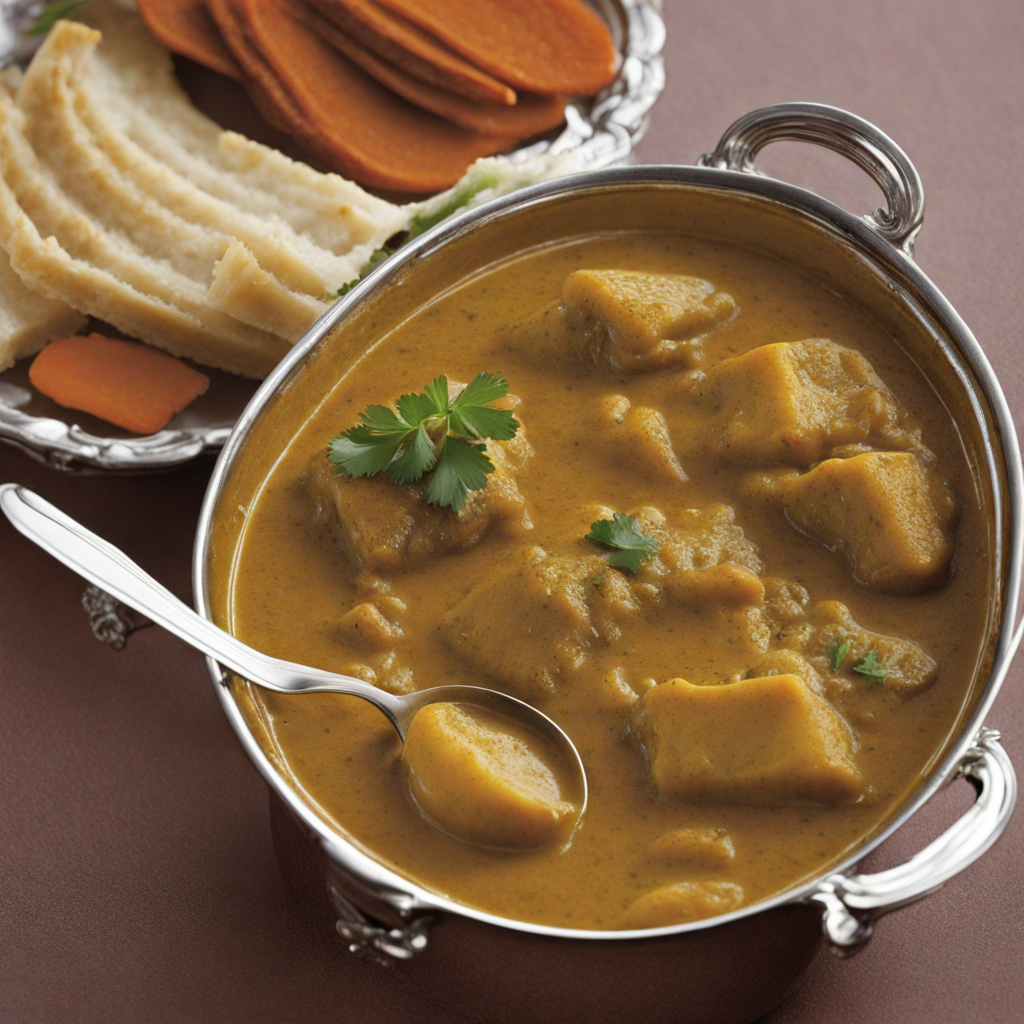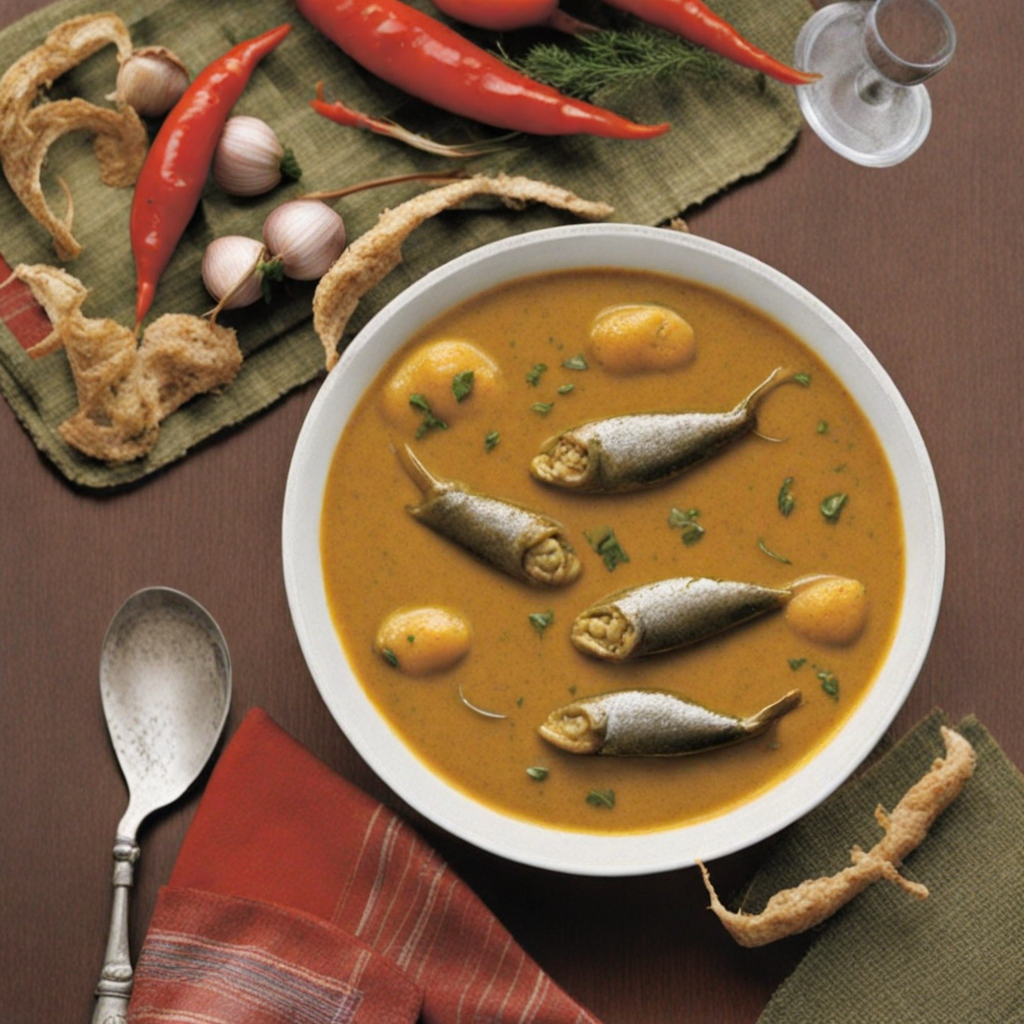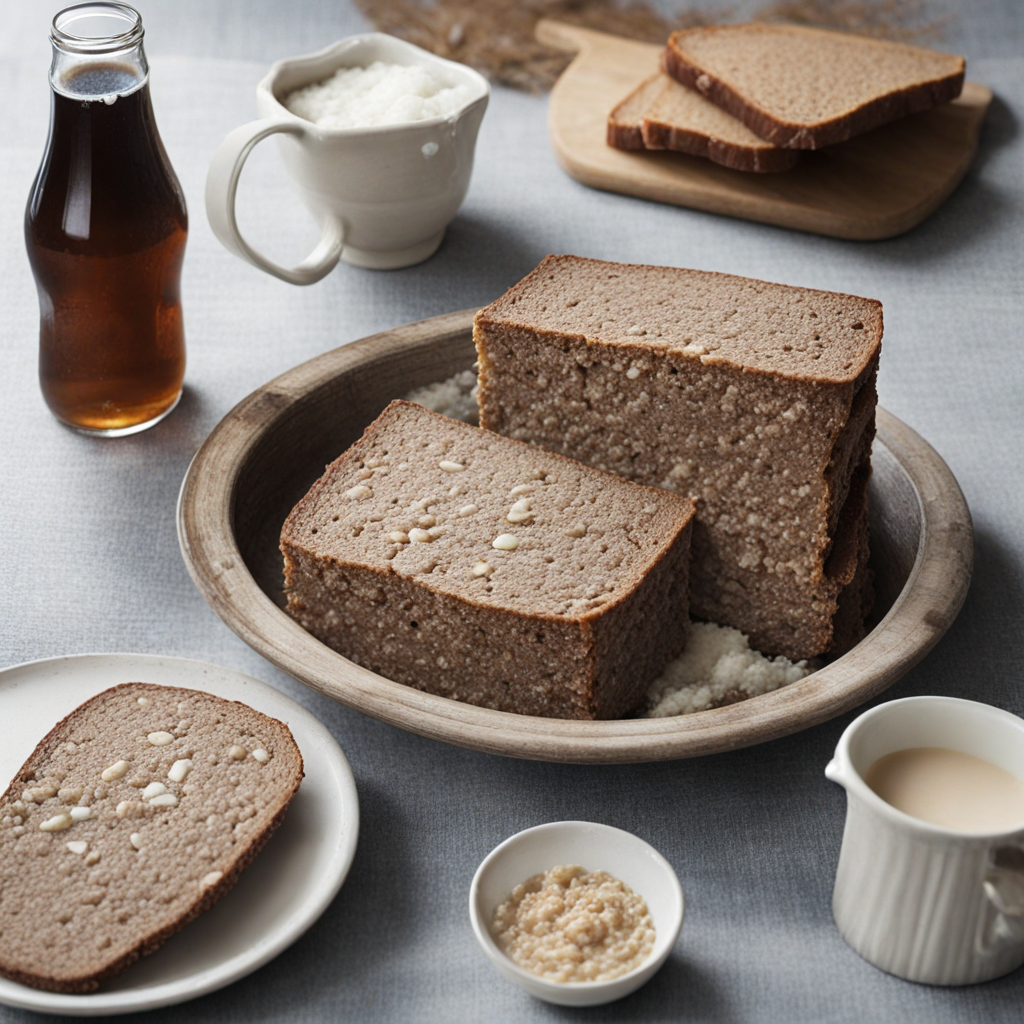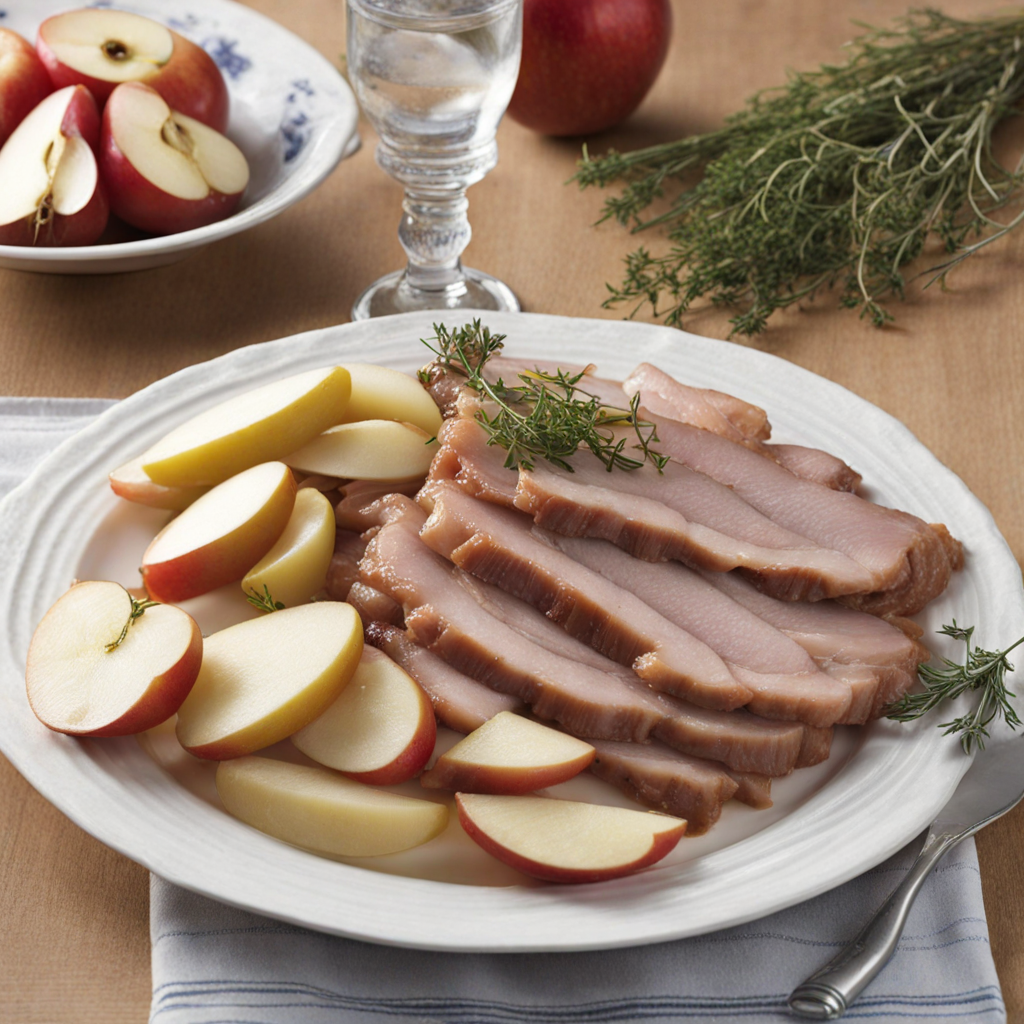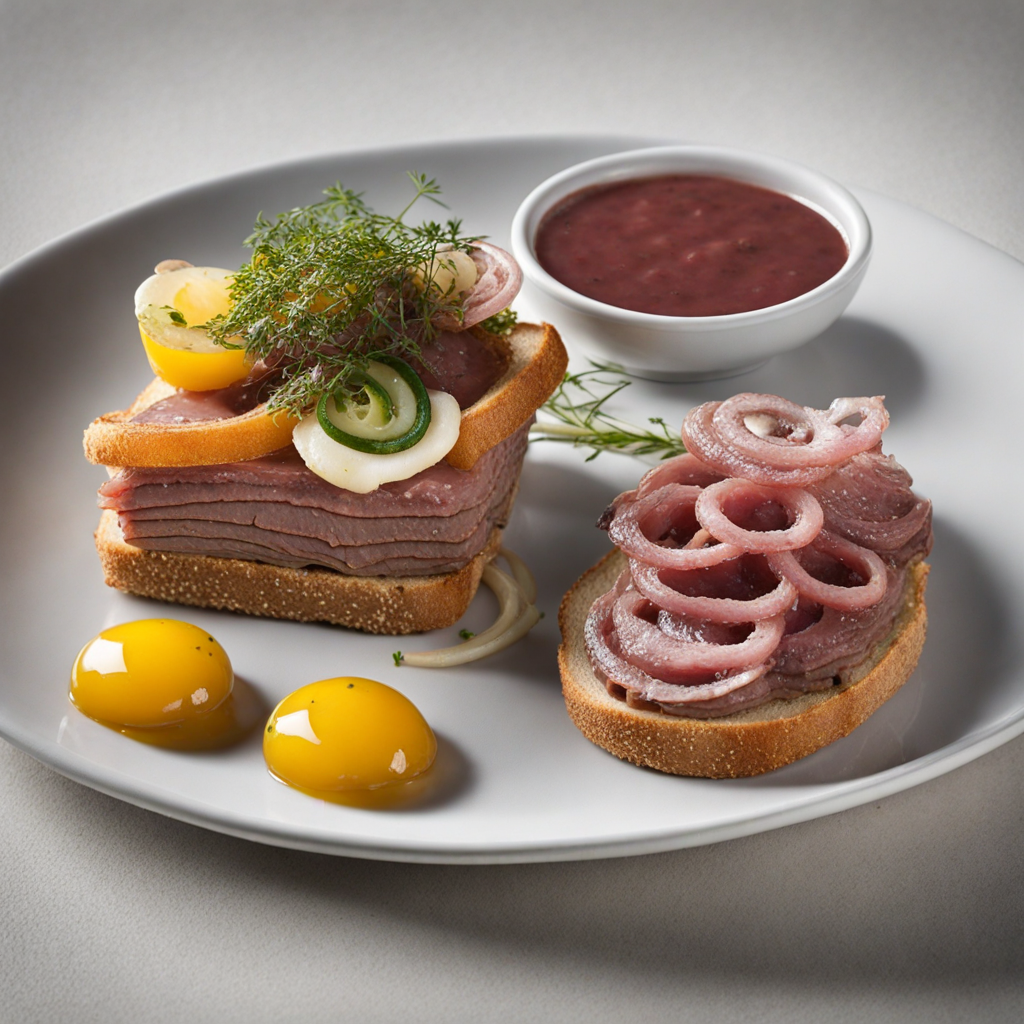Curry Sild
Curry Sild, a delightful Danish dish, presents a unique fusion of flavors that will transport your taste buds to the coastal regions of Denmark. This dish features herring, an iconic fish in Scandinavian cuisine, marinated in a vibrant curry sauce. The herring fillets are typically pickled, giving them a pleasantly tangy taste that contrasts beautifully with the rich and aromatic curry spices. The combination of sweet, savory, and tangy elements creates a symphony of flavors that is both refreshing and indulgent. What sets Curry Sild apart is its richly colored curry sauce, which is often made from a blend of curry powder, vinegar, and various spices. This sauce not only coats the herring but also infuses it with a warm, golden hue and an enticing aroma. The spices used can vary, but common additions include turmeric for earthiness, cumin for depth, and a hint of chili for a subtle kick. The result is a dish that is visually appealing and tantalizing to the palate, making it an excellent choice for adventurous eaters. Curry Sild is typically served cold, often accompanied by rye bread or crispbread, which adds a hearty texture to the meal. It can be enjoyed as part of a traditional Danish smorgasbord or as a standalone dish at any gathering. Each bite reveals layers of flavor, making it an exciting dish to savor with friends and family. The interplay of the marinated herring, the aromatic curry sauce, and the accompanying sides makes Curry Sild a must-try for anyone looking to explore the lesser-known culinary delights of Denmark.
How It Became This Dish
The History of Curry Sild: A Flavorful Danish Tradition Curry Sild, a traditional Danish dish, represents the confluence of maritime culture, culinary innovation, and cultural exchange. This pickled herring dish, infused with a blend of curry spices, showcases not only the unique flavors of Denmark but also the historical influences that have shaped its evolution. To understand Curry Sild, we must delve into its origins, cultural significance, and its development through the ages. #### Origins of Curry Sild Curry Sild finds its roots in the rich fishing traditions of Denmark. Herring has been a staple in Danish cuisine for centuries, with evidence of its consumption dating back to the Viking Age. The abundance of herring in the North Sea made it a critical food source, particularly during times of scarcity. The Danes developed various preservation methods, such as salting and pickling, to ensure that this vital resource could be enjoyed year-round. The introduction of curry spices into Danish cuisine, however, can be traced back to the 18th century when Denmark began to expand its colonial reach. Danish merchants and sailors returned from trading expeditions in the East Indies, bringing exotic spices, including curry powder, back to their homeland. The growing popularity of these spices among the Danish elite paralleled a broader European fascination with the flavors of the Far East during the Age of Exploration. Curry Sild, as we know it today, emerged in the 19th century. The dish combines the traditional pickling techniques used for herring with the vibrant and aromatic profile of curry, resulting in a unique culinary experience. The herring is typically marinated in a mixture of vinegar, sugar, and spices, with curry powder being the star ingredient. This harmonious blend reflects the Danish ability to adapt and incorporate foreign flavors while maintaining a distinctly local character. #### Cultural Significance Curry Sild is more than just a dish; it embodies the essence of Danish culinary heritage. It is a staple in traditional Danish fare, particularly during festive occasions and gatherings. The dish holds a special place in the Danish smorgasbord, a buffet-style meal that showcases a variety of dishes, including cured meats, cheeses, and pickled vegetables. Curry Sild is often served alongside rye bread, potatoes, and other accompaniments, creating a colorful and flavorful spread. The dish also reflects Denmark's maritime culture. Herring fishing has been integral to the country's economy and social fabric. Communities along the coast have long relied on herring as a source of sustenance and livelihood. Curry Sild serves as a reminder of this connection to the sea, celebrating the bounty of the waters and the culinary traditions that have developed from it. Furthermore, Curry Sild has become a symbol of Danish hospitality. When hosting guests, it is common to serve a selection of pickled herring, including Curry Sild, as an appetizer. This practice highlights the importance of sharing food and creating a sense of community, which is deeply ingrained in Danish culture. #### Development Over Time As with any traditional dish, Curry Sild has evolved over the years. The 20th century saw significant changes in Danish society, including urbanization and globalization. These shifts influenced culinary practices, leading to new interpretations of classic recipes. In the post-World War II era, Denmark experienced a surge in interest in home cooking and traditional recipes. Many families began to experiment with various ingredients and flavors, leading to diverse interpretations of Curry Sild. Regional variations emerged, with some cooks adding ingredients like apples, onions, or even chili to enhance the flavor profile. These adaptations reflect the creativity and resourcefulness of Danish home cooks, who sought to make the dish their own. The rise of globalization also introduced new culinary influences, resulting in a fusion of flavors that further enriched the Danish palate. Contemporary chefs began to experiment with Curry Sild, incorporating modern techniques and ingredients while paying homage to traditional methods. This evolution has led to the emergence of gourmet versions of the dish, often featured on the menus of upscale restaurants. Today, Curry Sild is celebrated not only in Denmark but also among the Danish diaspora around the world. It has become a cherished dish at festivals and cultural events, serving as a symbol of Danish heritage and identity. Social media has played a role in revitalizing interest in traditional dishes, as home cooks and food enthusiasts share their own takes on Curry Sild, showcasing its versatility and adaptability. #### Conclusion Curry Sild is a dish that encapsulates the spirit of Danish culinary history—a blend of tradition, innovation, and cultural exchange. Its origins in the fishing practices of the Vikings, its adaptation of exotic spices from the East, and its place in modern Danish society all contribute to its rich narrative. As we savor the unique flavors of Curry Sild, we are reminded of the enduring connections between food, culture, and community, and the ways in which culinary traditions continue to evolve while honoring their past. In a world increasingly characterized by cultural fusion, Curry Sild stands as a delicious testament to the Danish ability to embrace change while cherishing their roots. Whether enjoyed at a festive gathering, a casual family meal, or in a fine dining restaurant, Curry Sild remains an enduring symbol of Denmark’s rich culinary heritage—a true reflection of the flavors, stories, and traditions that have shaped this beloved dish through the centuries.
You may like
Discover local flavors from Denmark


